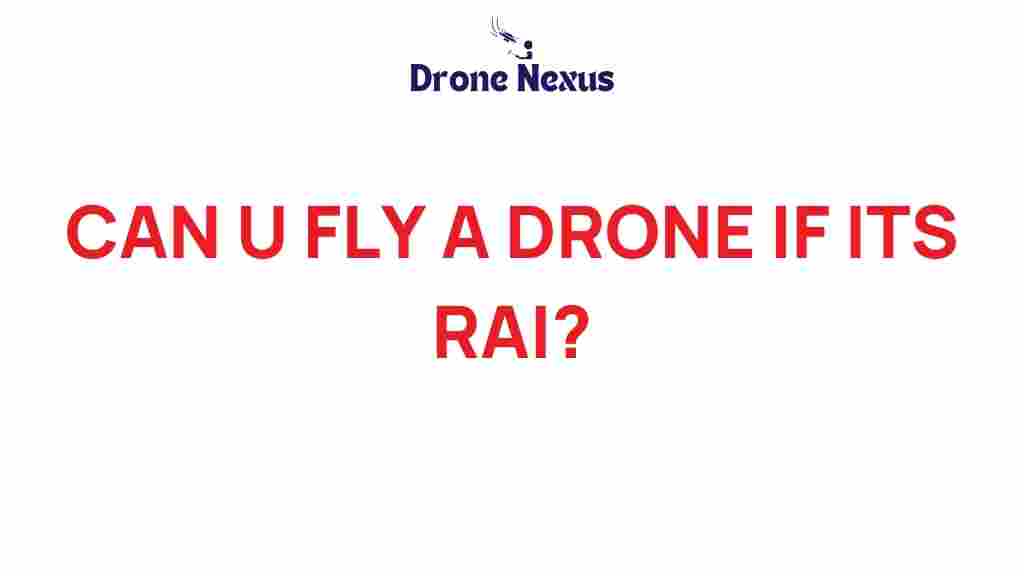Can You Fly a Drone in Rain? Discover the Surprising Truth!
As drone technology continues to advance, enthusiasts and professionals alike often wonder about the limitations of these incredible flying machines. One common question that arises is: can you fly a drone in rain? The answer may not be as straightforward as you think. In this article, we will explore the effects of rain on drones, the types of drones that can handle rainy conditions, and essential tips for flying your drone safely in inclement weather.
Understanding Drones and Their Capabilities
Drones, also known as Unmanned Aerial Vehicles (UAVs), come in various shapes and sizes, each designed for specific purposes ranging from photography to agriculture. Understanding the capabilities of your drone is crucial when considering flying in adverse weather conditions. Here are some key points to keep in mind:
- Water Resistance: Not all drones are created equal. Some are designed to withstand light rain, while others are completely waterproof.
- Flight Stability: Rain can affect the stability of your drone, making it harder to control.
- Camera Functionality: Moisture on the camera lens can hinder image quality and affect your aerial photography.
Can You Fly a Drone in Rain?
The short answer is: it depends. While some drones can handle light rain, flying in heavy rain can be risky. Here are some factors to consider:
- Drone Type: If you own a consumer-grade drone, it’s generally not recommended to fly in the rain. However, professional or specialized drones may have better weather resistance.
- Rain Intensity: Light drizzle may not pose a significant risk, but heavy downpours can damage your drone.
- Wind Conditions: Rain often comes with wind, which can affect the drone’s stability and control.
Types of Drones Suitable for Rainy Conditions
When exploring whether you can fly a drone in rain, it’s crucial to know which types of drones are better suited for such conditions. Here are a few categories to consider:
- Waterproof Drones: These drones are specifically designed to operate in wet conditions. They often come with sealed components to prevent damage from moisture.
- Weather-Resistant Drones: While not fully waterproof, these drones can withstand light rain. They usually have some level of protection against water ingress.
- Consumer Drones: Most consumer drones are not designed for wet weather. If you own a popular brand like DJI or Parrot, refer to the manufacturer’s guidelines.
Step-by-Step Process: Preparing to Fly Your Drone in Rain
If you’ve determined that your drone can handle light rain, follow these steps to prepare for your flight:
1. Check the Weather Forecast
Before heading out, always check the weather forecast. Look for:
- Rain intensity
- Wind speed
- Temperature changes
2. Inspect Your Drone
Ensure that your drone is in optimal condition:
- Check for any visible damage.
- Ensure battery compartments are sealed.
- Inspect all electronic components for moisture.
3. Use Proper Settings
Adjust your drone’s settings to account for wet conditions:
- Set a lower altitude to maintain better control.
- Reduce flight speed to enhance stability.
4. Keep a Close Eye on Battery Life
Cold and wet conditions can affect battery performance. Make sure to:
- Monitor battery levels closely.
- Have a backup battery ready if needed.
Troubleshooting Tips for Flying Drones in Rain
Even with the best preparations, issues can arise when flying your drone in rain. Here are some troubleshooting tips:
1. Loss of Signal
If you lose connection with your drone, try the following:
- Return to the last known location.
- Change your position to regain signal.
2. Water Accumulation
If you notice water on your drone:
- Land immediately and dry the components.
- Use a microfiber cloth to remove moisture.
3. Reduced Flight Time
If your drone’s flight time decreases:
- Land as soon as possible to avoid battery depletion.
- Consider flying in less adverse conditions in the future.
Conclusion: Making the Right Decision
In conclusion, whether you can fly a drone in rain largely depends on the type of drone you own and the intensity of the rain. Waterproof and weather-resistant drones are more capable of handling wet conditions, while consumer drones typically should be kept on the ground during rain showers. Always prioritize safety and equipment integrity when deciding to fly in adverse weather conditions.
For more information on drone maintenance and flying tips, check out our drone guide. If you’re interested in exploring the various types of drones available, visit this resource for a comprehensive overview.
Remember, flying a drone in rain can be a thrilling experience, but it’s essential to be prepared and informed to ensure a safe and successful flight.
This article is in the category Safety and created by DroneNexus Team

2 thoughts on “Can You Fly a Drone in Rain? Discover the Surprising Truth!”